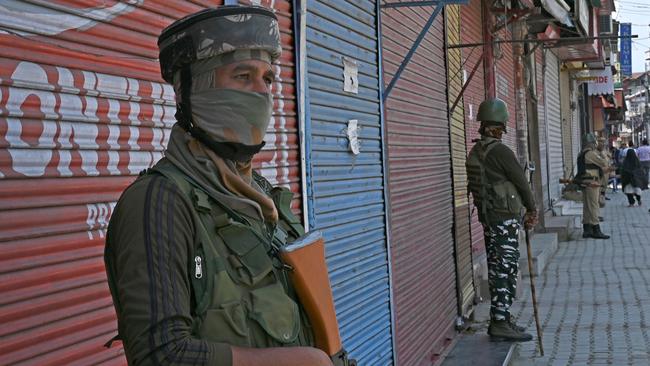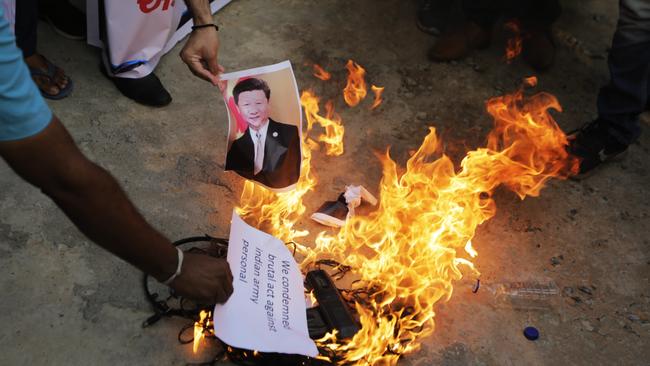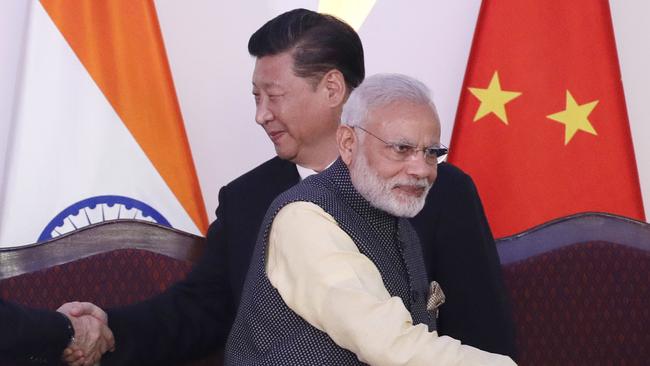20 Indian soldiers killed in Himalayan border clash with China
The Indian soldiers were killed in a border flare-up analysts warn could be a turning point between the two superpowers.

Twenty Indian soldiers have been killed in a violent face-off on the Himalayan border with China, the first deaths on the tense Line of Actual control in 45 years, following weeks of clashes that analysts yesterday warned could be a “turning point” in the decades-long dispute.
The Indian Army on Tuesday at first confirmed only the deaths of two soldiers and an officer who were killed on Monday night as both sides were withdrawing from advanced positions dug in over recent weeks.
“During the de-escalation process underway in the Galwan Valley, a violent face-off took place yesterday (Monday) night with casualties on both sides,” the army said.
But an Indian military spokesman later said that three Indian troops were killed during the fighting while 17 others later succumbed to injuries. Others were missing and feared captured.
Senior military officials of the two sides were currently meeting at the location to defuse the situation, the army added.

China’s foreign ministry spokesman Zhao Lijian said Indian troops “illegally crossed the border twice” on Monday. He accused India of “provoking and attacking Chinese personnel, resulting in serious physical confrontation between border forces on the two sides”.
Beijing had lodged “strong protests and solemn representations” to Delhi, he said. He made no mention of fatalities.
It is not known how the three men died, though some Indian media cited army sources on Tuesday as saying there was no firing during the face-off and that the men “were killed in hand-to-hand combat on Indian territory”.
No shots have been fired along the 3500km border since 1975 when the two countries established mechanisms to resolve local clashes between soldiers and avoid a repeat of the 1962 war in which China seized Aksai Chin, a remote area in the northeast corner of Ladakh near Tibet, which had been part of India. The last serious clash between the two armies was in Doklam in 2017, an area claimed by both China and Indian ally Bhutan, but it is rare for either Indian or Chinese soldiers on the border to carry weapons in order to avoid escalating conflicts.

In recent weeks however, Indian and Chinese soldiers have fought each other with fists, sticks and stones, deployed forces and heavy equipment in disputed territory and posted humiliating videos on social media of their forces detaining the other’s soldiers.
Tensions have been boiling for weeks over India’s moves to build an all-weather road to a remote air base in Ladakh, in India’s far northern Kashmir region.
In early May thousands of PLA troops began moving over the disputed LAC and digging in, first in Ladakh’s Pangong Lake region and days later more than 1200km away on the Sikkim border.
Indian media and analysts have warned for weeks that the intensity of troop concentrations on both sides posed a danger the current face-off could blow up into a bigger military confrontation.
Brahma Chellaney, Professor of Strategic Studies at Delhi’s Centre for Policy Research, said on Tuesday: “China’s aggression, and the killings mark a turning point. When China encroached on multiple Indian border areas in April/May and occupied some vantage locations, it marked a major escalation. The military fatalities underscore the risks of a larger military conflict.”
Deep Pal, an India China security analyst and non-resident fellow at Washington DC’s National Bureau of Asian Research, said the deaths “definitely change things in the sense they’re the first in a really long time ... and makes resolution so much more complicated”.
But there was little detail on how the men died with varying reports that they died as a direct result of being hit by stones or other missiles, while others suggested the deaths were due to misadventure given the “de-escalation” was happening in the dark and in treacherous terrain.
“We still haven’t heard the Chinese version of events which makes thing that much more complicated. I would say it is a huge hindrance towards de-escalation more than an immediate reason for escalation,” Dr Pal said.
While it was a positive sign that senior military officials from both sides have been talking since the incident, “this puts a question mark over the larger conversation that has been happening”, he said.






To join the conversation, please log in. Don't have an account? Register
Join the conversation, you are commenting as Logout